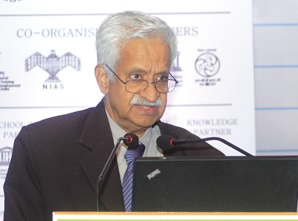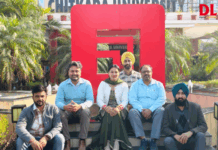

Prof V S Ramamurthy,
Director, National Institute of Advanced Studies (NIAS) and Former Secretary, Department of Science
and Technology, Government of India
When the leftovers are entering the teaching career, you know what will happen to education of your children
We are standing on the threshold of a knowledge dominated era. Trained human resource holds the key, not only for national development and business competitiveness, but also for national security. The biggest challenge, to be faced by the educationists in the coming years is faculty shortage.
Education stands on three pillars: students, teachers and educational infrastructure. If there are no students, you do not have to worry about education. Most of the western world is facing the problem of decreasing number of students—they are not getting enough students.
Excellent infrastructure but no takers
The western world have built a very enviable educational infrastructure during the last 100 years. The big educational institutions have infrastructures which are unbeatable. But, if there is shortage of teachers and students, infrastructure will sit idle. Excellent infrastructure will be converted into a nice educational museum; there won’t be education in those buildings. Unfortunately, if there is a shortage of students today, it will lead to shortage of faculty tomorrow, because today’s students are teachers of tomorrow.
India is in a different bracket. It does not have shortage of students. But, the challenge is to ensure that everyone receives education. We do have a problem with infrastructure; we know that the number of colleges, universities, and schools are not enough. The government of India has taken very ambitious steps particularly in the last few years; major initiatives have been taken to build the additional infrastructure. But you can’t have a good university only on the basis of brick and mortar constructions, you also need a good faculty. The existing institutions have around 30-40 percent faculty shortage.
The way ahead
Teachers of the 2020 are already in the schools; they will not be created in 2019. If we don’t train them to be a good teacher, we will not get good teachers. Quality teachers can’t be created instantaneously. More than a decade of work is needed to mould someone into a quality teacher. Talented individuals have to be encouraged to take up teaching as a profession. Opportunities for students are increasing in emerging areas of technology. Salary for teachers is still lesser than what is being offered in other jobs. Not only is there a monetary disincentive to being a teacher, there are social pressures too. Indian parents don’t want to see their son as a teacher; they want him to be a CEO and have a rather plush lifestyle.
When the leftovers are entering the teaching career, you know what will happen to the education of your children. We have to create an enabling atmosphere, where good quality students can be inspired into taking up the teaching career. The US has a similar challenge in the field of Research and Development (R & D). An ambitious programme by the Department of Science & Technology tries to identify close to hundred thousand students who are academically good. These students are then encouraged to take up higher education and then move into the field of R&D.
Our country also needs to identify good quality students who can be a good teacher. These students must be encouraged to opt for the teaching profession. Unless we can improve the quality of our teachers, the state of Indian education system cannot be improved.
























